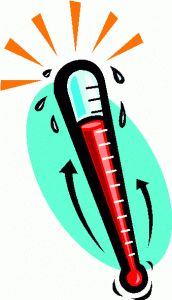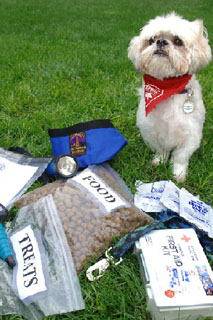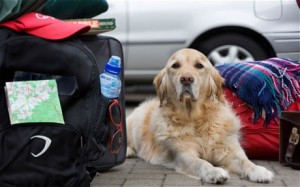 My sister called me today to tell me it was 111 degrees in Long Beach California. 111! Oh, right. It’s Indian summer right now – it happens every year – and the temperatures hover in obscene ranges as the dry Santa Ana winds punish region. Often these dry winds are accompanied by California fires (in fact, I just stumbled across a website that lists all fires in California. http://cdfdata.fire.ca.gov/incidents/incidents_current )- there were 12 major fires just this month!
My sister called me today to tell me it was 111 degrees in Long Beach California. 111! Oh, right. It’s Indian summer right now – it happens every year – and the temperatures hover in obscene ranges as the dry Santa Ana winds punish region. Often these dry winds are accompanied by California fires (in fact, I just stumbled across a website that lists all fires in California. http://cdfdata.fire.ca.gov/incidents/incidents_current )- there were 12 major fires just this month!
But no matter where you live, having safety precautions in place in the event of a fire is important.
Recently I wrote about pet fire safety for you and your pets called, oddly enough, Fire Safety for Your Pets. If you missed reading it, now is a good time to review- it being fire safety month and all…. The article discusses things you can do to make you and your pets safer in the event of a fire. There is also a link to ADT’s website where, in exchange for your name and address, they will send you a free window decal indicating pets are inside. These decals are good to have in the event of any emergency where your home is evacuated. Rescuers will know to check for pets in the event you are not home when the evacuation occurs. Your pet’s lives just might be saved because of that decal.
Here is the link to get a free decal for yourself: http://www.adt.com
The second part of your plan should be to have an evacuation plan in place. I mentioned California – land of earthquakes and wildfires. Well now I’m in Florida land of hurricanes.
As a result of living here, we’ve written several articles on hurricane evacuation plans, and those plans work just as well when planning an evacuation for any type of disaster be it hurricane, earthquake, tornado, flood, fire, etc. You’ll want to have some things handy in the event you have to vacate suddenly and the time to put them together is before you need them.
Here are a couple of articles that you can use as guidelines for putting together your own plan:
Pet First Aid Kit : It is always best to be prepared for emergencies and this applies to your pet’s health as well as to your own. A good suggestion is to have a Pet First Aid Kit handy located near your own First Aid Kit. We’ve put together a suggestion for what your kit should contain with our Pet First Aid Kit Checklist:
- A card with your veterinarian’s phone number and the location of the closest emergency pet hospital and the poison hotline (you can find information for both all of these at www.vetlocator.com)
- A roll of gauze to cover wounds. Gauze can also be used to wrap around the muzzle or beak of a wounded animal to keep them from biting.
- Non-stick gauze pads for wounds
- Towels for clean-up, covering the animal while moving or to keep warm.
- Adhesive tape for bandages
- 3% hydrogen peroxide for cleaning wounds
- Eyedropper for giving medicine orally (a syringe without the needle works well too)
- Saline solution to flush out debris in the eyes
- A couple of pairs of disposable rubber gloves
- Tweezers
- Soap
- Some extra food and treats
- Leash or rope
- Pet CPR reference from www.vetlocator.com
You should call your veterinarian as soon as you can to get advice on what to do in the emergency your pet is going through. If you suspect that your pet has been poisoned, let your veterinarian know, or call the poison hotline immediately. You will be given instructions on how to proceed in the quickest way to help your pet.
Remember, it is important not to panic. If you suspect poison, time is critical so telephone someone right away. www.vetlocator.com has many resources available for maintaining the health of your pet in our resource library, www.vetlocator.com/library.php.

Editor – Daily Paws



